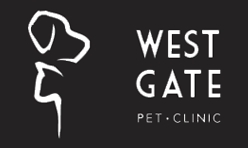One of the most serious medical conditions seen in dogs is GDV, gastric dilatation and volvulus, also known as bloat.
The stomach is positioned forward in the abdomen and in most dogs is covered by the ribs. It normally processes food delivered from the esophagus through digestion and then moves the digested food into the small intestine for absorption of nutrients.
When the stomach bloats, gas and/or food stretches the stomach many times its normal size, causing significant pain. If the stomach then rotates it can twist off the blood supplying it and prevent food and gas from exiting the stomach. The spleen and pancreas, which lie near the stomach can also be compromised. If left untreated this condition is often terminal.
Luckily a majority of dogs are not at risk of developing GDV. Those at risk are large deep chested dogs with Great Danes, Standard Poodles, Dobermans, Weimeraners, Greyhounds and Setter Breeds especially at risk. One study suggested that dogs over 99 pounds have a 20% incidence of bloat.
Other risk factors for bloat include feeding one large meal per day instead of several smaller meals, a family history of bloat, rapid eating and feeding from an elevated bowl. Males are more often affected than females and dogs aged 7-12 are more commonly affected than younger dogs.
For those dogs at risk, prophylactic gastropexy is an effective surgery for the prevention of bloat. Typically done at the same time as a spay or neuter, gastropexy involves permanently attaching the wall of the stomach to the wall of the abdominal cavity to prevent rotation of the stomach.
Traditionally gastropexy was a relatively invasive procedure done through a long incision on the abdomen. Now we are able to do laparoscopic assisted gastropexy allowing much less pain, a shorter recovery and less trauma to the dog.
With laparoscopic assisted gastropexy, two very small incisions are made in the abdomen through which surgical ports are placed. One port is placed on the midline of the abdomen and a telescope with an attached video camera allows visualization of the abdomen. The second port is placed through the abdominal wall above the area of the stomach to be attached. The stomach is brought up to the abdominal wall and secured to the wall through a series of sutures/stitches.
It is recommended that exercise be restricted for 10-14 days after this procedure and meals be fed as smaller amounts more frequently for 1-2 weeks to prevent strain on the newly formed attachment between the stomach and abdominal wall.
What's Next
Call us or schedule an appointment online.
Meet with a doctor for an initial exam.
Put a plan together for your pet.


